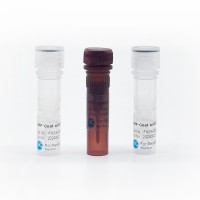Recording hERG Potassium Currents and Assessing the Effects of Compounds Using the Whole-Cell Patch-Clamp Technique
互联网
515
The complex gating of the hERG channel makes it ideally suited to its principal role in controlling phase 3 repolarization of the cardiac ventricular action potential. Any abnormal delay in repolarization can lead to the re-activation of Ca2 + channels, giving rise to early after-depolarizations, and coupled with increased cardiac dispersion, typically associated with these delays, provides respectively both the trigger and substrate for the potentially life threatening arrhythmia Torsardes de Pointes (TdP). Owing to the fundamental role of hERG in controlling the duration of the cardiac action potential, it is not surprising that any drugs that potently and selectively block this channel are liable to have these effects. Consequently, much effort has been expended in developing standard voltage protocols to reliably assess the effects of compounds on hERG currents in vitro. This chapter describes how to record hERG currents in a recom-binant cell line using the whole-cell patch-clamp technique. It also provides typical voltage protocols used for assessing the basic electrophysiological properties of these currents and for assessing the effects of compounds on hERG tail currents.









